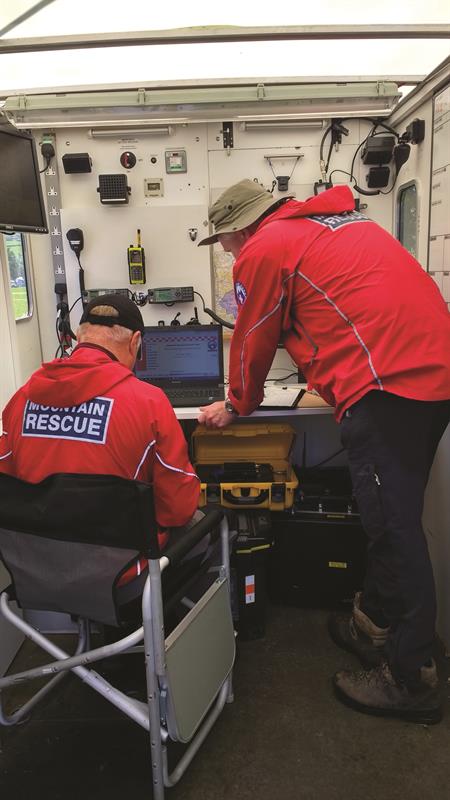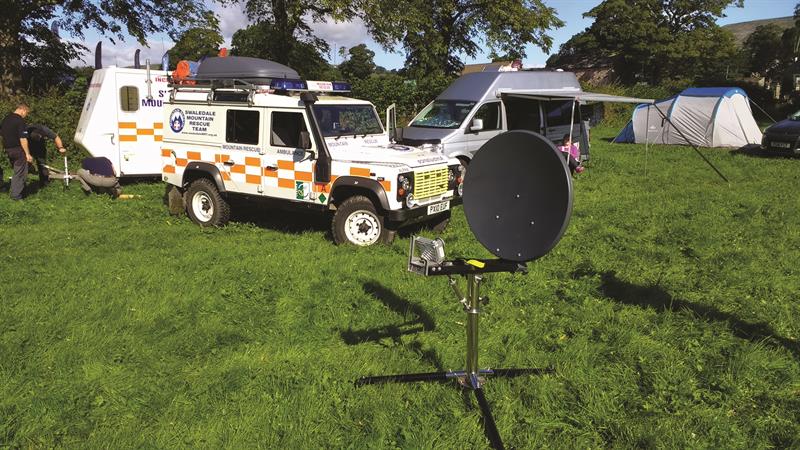There are massive implications, both good and bad, for UK public safety comms following the imminent roll-out of the Emergency Services Network.
On the one hand, the network will, once it’s up and running, open the way to a whole new world of high bandwidth applications. These could range from something as seemingly elementary as sending an email, through to video communication between emergency services in real time.
Less positive meanwhile is the possibility that in the very worst case scenario, ESN might be a step backwards in mission-critical PTT functionality compared to the current tried-and-tested Airwave system. Indeed, it has been suggested – and not without reason – that if the Home Office and its partners get it wrong in terms of devices and coverage, lives could be lost.
As much of a game changer as the Emergency Services will undoubtedly be, it’s important to remember that there are core public safety organisations for whom mission-critical LTE will only ever be a marginal solution, primarily due to budgetary restrictions.
One such service is Mountain Rescue, which relies entirely on the goodwill of its volunteers just to function at all, let alone deploy prohibitively expensive radio equipment.
No bodies found
Located in the North Yorkshire dales, Swaledale Mountain Rescue is a great example of a non-government funded life-saving organisation making the very best out of the few resources that it has. Its digital communications effort is particularly compelling for a number of reasons.
The environment in which the team operates is one of the most remote and challenging in the United Kingdom. This necessitates a level of invention when it comes to the deployment of equipment, taking into account 2,000-feet high heather moorlands, valleys, waterfalls, woodland, deserted lead mines and so on.
Alongside the terrain itself however, there is also a palpable will to improve (and experiment) when it comes to the team’s comms strategy. The best and most recent example of this is its roll-out of a DMR Tier III system, the deployment of which takes Swaledale outside the accepted UK search and rescue radio protocol, which specifies Tier II. It also makes it the first mountain rescue team in the country to take advantage of a (non-Airwave based) trunked system.
Land Mobile visited the team on an unexpectedly calm and sunny day in August of this year, dropping in during a weekend-long deployment at an annual mountain bike trial. Speaking just before the beginning of the event, volunteer Paul Denning described the work of the organisation.
“The team is made up of about 40 members,” says Denning, “of whom there’ll be about 20 available on any given incident, with the others unable to attend due to work and family commitments.
“Twenty is really the minimum number required to perform any kind of rescue operation. Just to give one example of the logistics involved, it takes six people to carry a stretcher, with those involved getting worn out quite regularly which means that someone else will need to take over.”
He continued: “We look for missing people and carry out rescue operations in all weathers. That could be above ground or in one of the 100 or so deserted mines dotted around the Swaledale and Wensleydale area. We would probably have a major underground rescue about once every 10 years.
“Probably the most high-profile job – certainly that I’ve ever been involved in – was the effort following the Lockerbie bombing in 1988. The aircraft blew up 30,000 feet over Scotland, with the wind subsequently scattering the debris in different directions, as far down as Northumberland.
“Our job was primarily to help recover evidence, and also in the identification of victims. We found things like aircraft safety instruction cards, as well bearer bonds, and even someone’s credit card. Thankfully, we didn’t come across a body.”
Little white trailer
Swaledale Mountain Rescue’s primary function is to protect human life, which it achieves via attendance at potentially high-impact calendar events, as well as through its search and rescue efforts. It is called out to around 50 incidents every year.
The team’s basic comms set-up, as exemplified during its presence at the Ard Rock bike trials, consists of the use of a variety of networks, centred around the newly-rolled out DMR Tier III as a primary comms channel.
It will likewise have access to the Airwave TETRA system (via a limited number of handsets borrowed from North Yorkshire Police), alongside local networks facilitating communication – as on the day in question – with event organisers, the first aid tent and so on.

Swaledale comms operations are co-ordinated from the team’s trailer
The communications strategy is co-ordinated from out the back of a little white trailer, used partly because of budgetary restrictions, but also for the ease with which it can be moved around.
As well as a variety of handsets, this houses the team’s digital mapping system (MRMap) and SARCALL, a text-based solution through which the team communicates with other mountain rescue organisations. These are linked to a portable satellite receiver, set up next to the trailer prior to the beginning of any incident.
Speaking of the technology, Denning said: “MRMap and SARCALL are vital for providing situational awareness, as well as for contacting other teams if we require mutual aid.
“All of our radios have GPS in them, information which is fed back into MRMap before being distributed to all mountain rescue teams across the country. That’s obviously useful for keeping track of who’s doing what and which areas have been searched, but also for providing a log for police to refer back to after the incident has finished.
“SARCALL, meanwhile, quite simply allows us to contact other local teams should we need help during a big incident. Long gone are the days when if you found a casualty, you’d have to dispatch someone to a phone box to ring 999.”
The final piece of the comms puzzle is the equipment deployed when someone is lost underground. According to Denning, Swaledale previously used something known as a ‘mole phone’ which enabled communication, via the use of extremely low frequencies, through several hundred feet of rock.
This wasn’t ideal due to the high level of accuracy required to vertically align transmitter and receiver, and the team now deploys a solution called Cave-Link, which operates via data transmission.
“Cave-Link is used by the Austrian mining industry,” says Denning. “If anything, it’s better than radio, at least in that environment, because it can be so noisy underground. The manufacturers put a cheap pair of glasses inside the peli box to help out people of a certain age whose arms might not be quite long enough anymore to read the screen.”

A portable satellite receiver is set up before every incident
Only limited effectiveness
As mentioned, Swaledale’s primary radio system is DMR Tier III, something which it had only just rolled out when Land Mobile came to visit. Before this, the team was using a back-to-back VHF system which, while it did the job, provided only limited effectiveness because of the nature of the terrain.
As a solution to this, Denning, no stranger to thinking out of the box, got in contact with radio manufacturer Simoco to ask what the best course of action would be if the team had the money to radically change things.
According to him, the company – which was already supplying Swaledale with its SRP 9180 handsets – suggested a quasi-synched simulcast system, which they also pointed out would be prohibitively expensive.
“Once that option was off the table,” says Denning, “Simoco suggested an at-the-time new technology called DMR which they said would be a perfect fit for us, although we might have to wait a couple of years for it to develop.
“Sure enough, when the first lot of DMR came into the country, we got hold of a single repeater and a couple of radios from them just to test it, and it worked really well. After that, we knew what we wanted to aspire to.”
He continues: “Initially, we decided that the best option would be Tier II because it was cheaper and would give us everything we wanted without having to buy a load of licenses to activate the features.
“Ultimately though, we needed to extend our coverage, so we chose Tier III. That said, we’ve also included the full UKSAR Tier II bandplan into our radios to ensure full interoperability with all UK mountain rescue teams.”
Spending the whole budget
Both Swaledale, and Wensleydale, which sits alongside it, provide unique challenges for a DMR system, not least the varied and often inaccessible nature of the terrain. More than that, however, is their remoteness, which clearly has the potential to limit a solution built around an IP-based infrastructure.
However, Denning was able to come up with an elegant solution, with each dale containing a number of businesses, many of which were more than willing to lend a helping hand to the local mountain rescue team free of charge.
He said: “One of the benefits of DMR is that it can be managed via the internet. The other side of that is that it could potentially have been quite challenging to find suitable sites given the location.
“That was actually the easiest part of the project in the end. For instance, at the bottom end of Wensleydale, there’s a large quarry commanding a lovely large hilltop site, and we were able to leave our base station in their loft space.
“Likewise, there’s a creamery making Wensleydale cheese at the top end of the valley, and they let us do a similar thing in their server room. Our router connects to their router and they talk to each other. On all bar one of our sites, we’re sitting on somebody else’s internet – and hey presto, we have a radio system.”
In total, the network cost around £30,000 to build and install, with the process taking around three years. This represented the equivalent of the team’s budget for a year, but, in the words of Denning himself, “was a pittance compared to Airwave.”
He now envisions DMR Tier III as a potential solution for other hard-pressed public safety organisations needing to upgrade their comms. According to him, the technology could become the equivalent of Airwave for voluntary organisations. It could even provide a back-up to the Emergency Services Network, allowing first responders to at least talk to one another should the worst come to the worst.
Speaking of the technology’s potential and the scope of his plans going into the project, he said: “In terms of functionality, DMR Tier III is incredibly close to Airwave, including the ability to conduct group calls, point to point, telephony and so on. In essence, it’s a trunked radio system with a data capability.
“Regarding the system’s use going forward, we’ve already created three talk groups for every mountain rescue team in the county. On top of that, there’s also one for every police force, fire service and ambulance service. If we could now curate a gateway so that SARCALL could connect to the DMR network, services would be able to speak directly
to each other.”
Mountain Rescue is an integral part of the UK public safety effort, as important to those who come to rely on it as the fire, ambulance or police services. It also receives little or no recognition, and even less funding.
With that in mind, it’s encouraging to see the continuing dedication of people such as Denning and his team, who give not only their time, but put their lives on the line in often dangerous circumstances. The expertise shown by those involved in building and managing the organisation’s comms free of charge, meanwhile, is nothing short of extraordinary.



